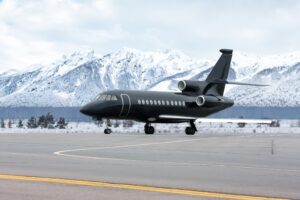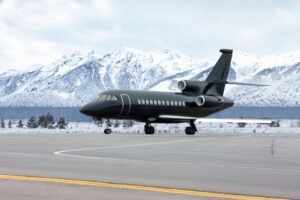
There has been a huge shift across a range of industries in how they use and incorporate new technologies to improve their growth and efficiency.
Although it can take some time for new technological innovations to become adapted and used by businesses, we are already seeing the impact some are having. In the aviation industry, there are several examples of new innovations being used to enhance flight technology, aircraft maintenance, and pilot training. Below, we look at the latest innovations in aviation and what the future of the industry looks like.
Artificial Intelligence (AI)
One of the most popular technologies that is being used across a range of sectors throughout the world is artificial intelligence. Thanks to the ability of artificial intelligence technology to use machine learning algorithms, the aviation industry is able to optimise a number of its services and processes, including things like reducing fuel consumption, providing personalised experiences for passengers as well as finding the best possible flight routes for airlines at any given time. This is seen in both commercial airlines and those providing private jet services, showing just how much of an impact this technology is having on the industry as a whole.
In addition to this, artificial intelligence technology is being used to improve the safety of flying by analysing a huge amount of data in a very short period of time and providing useful information for air traffic control and pilots in real-time to assist in their decision-making. It is clear that artificial intelligence is having a significant impact on the aviation industry, improving the productivity and efficiency of flights whilst also reducing the risk of preventable things going wrong.
Predictive Maintenance
One of the latest innovations that has piqued the interest of many of the largest companies in the aviation industry is predictive maintenance technology which is able to constantly monitor the quality of the various parts of an aircraft and alert when maintenance is required. One of the issues with this type of technology is that it costs a huge amount to implement; however, the upside is that over a long period of time, this technology can likely save airlines a huge amount of money. For example, it can fix issues before any irreversible damage is done, requiring a part to be fully replaced.
For predictive maintenance to function properly, a huge amount of data needs to be collected first so that the technology can accurately and successfully spot potential sources of issues. This requires a number of things, including the implementation of artificial intelligence technologies and sensors on aircraft. These sensors can monitor things like the functional status of the different parts of the aircraft, including avionics, landing gear, wings and the engine. By combining artificial intelligence technologies with the data collected from these sensors, predictive maintenance technology can use machine learning algorithms to calculate when equipment is close to failing, allowing any problems to be resolved before it’s too late.
Lufthansa Technik MRO organisation is one of the leaders in this new technology that is using it effectively to detect problems with aircraft early on improving the overall reliability and safety of their aircraft. In addition to this, the technology provides an overview of the aircraft’s health in real-time, allowing any sudden problems to be flagged and fixed immediately.
Autonomous Aircraft
Another innovation in the aviation industry, which was mostly a fantasy a few decades ago, is the potential for aircraft to become fully automated. Huge leaps have been made in this area of aviation in 2024, and it may not be long before we start experiencing flights that don’t require pilots. However, ethical and safety concerns remain about self-piloted vehicles carrying human passengers without a trained operator onboard, and this is where a lot of time will be needed to develop the proper regulations to guarantee safe passage.
Electric Vertical Take-Off and Landing (eVTOL)
Unlike the traditional method of a runway used by aircraft to take off and land, eVTOL technology is an interesting alternative that enables aircraft to take off from a stationary position, hover, and land vertically. This has huge potential for use, especially in areas that are very congested and have no space for a long runway. In the future, if this technology becomes more popular and widespread, more people may have access to parts of the world that were not possible before.
This technology is powered by electricity, which is another goal for the aviation industry to become more sustainable and environmentally friendly in the coming years. It is also being tested with autonomous aircraft, so it is possible that in the future, we may see planes flying without a pilot.
Industry Giants Taking the Lead
There is a huge competition between the aviation industry’s largest players, such as Airbus and Boeing, racing each other to utilise the latest technology and provide the optimum flying experience. Both companies are investing heavily in autonomous aircraft technology, and both have already completed flight tests that are fully autonomous, so seeing these autonomous aircraft in everyday use may come sooner than we think.
The Future of Aviation
The future of the aviation industry is uncertain. However, there are a number of innovative technologies that are already being used to optimise the flying experience of passengers making it more enjoyable and safe. Companies are using this technology to optimise their processes, leading to a faster rate of growth and success. Although autonomous aircraft may be something we see in the future, there are still a number of legal and ethical aspects that need to be considered before it becomes a reality.
Read more:
Latest Innovations In Aviation

